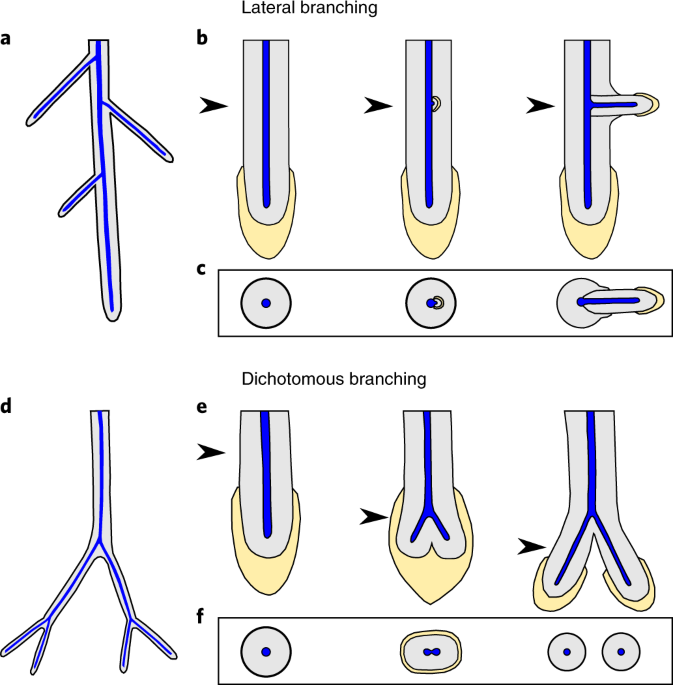
Multiple origins of dichotomous and lateral branching during root evolution
- Select a language for the TTS:
- UK English Female
- UK English Male
- US English Female
- US English Male
- Australian Female
- Australian Male
- Language selected: (auto detect) - EN
Play all audios:

Roots of extant vascular plants proliferate through lateral branching (euphyllophytes) or dichotomy (lycophytes)1,2,3,4. The origin of these distinct modes of branching was key for plant
evolution because they enabled the development of structurally and functionally different root systems that supported a diversity of shoot systems3,4,5,6. It has been unclear when lateral
branching originated and how many times it evolved4,7,8. Here, we report that many euphyllophytes that were extant during the Devonian and Carboniferous periods developed dichotomous roots.
Our data indicate that dichotomous root branching evolved in both lycophytes and euphyllophytes. Lateral roots then evolved at different times in three major lineages of extant
euphyllophytes—the lignophytes, ferns and horsetails. The multiple origins of dichotomous and lateral root branching are extreme cases of convergent evolution that occurred during the
Devonian and Carboniferous periods when the land-plant flora underwent a radiation in morphological diversity.
The paratype ULG 2057a and ULG 2057b of L. goense is housed in the collections of the University of Liège, Belgium. All other data supporting the findings of this study are included in the
paper and its Supplementary Information.
A.J.H. thanks C. Prestianni for help and hospitality while examining the collections of The University of Liège, as well as L. Ji and S. Snigirevsky for assistance with translation. A.J.H.
was funded by the George Grosvenor Freeman Fellowship by Examination in Sciences, Magdalen College (Oxford); L.D. by a European Research Council Advanced Grant (EVO500, contract 250284),
European Commission Framework 7 Initial Training Network (PLANTORIGINS, project identifier 238640) and European Research Council Grant (De NOVO-P, contract 787613); and C.M.B. by NERC grant
NE/J007897/1.
Department of Plant Sciences, University of Oxford, Oxford, UK
School of Earth and Ocean Sciences, Cardiff University, Cardiff, UK
A.J.H. designed the project with advice from L.D. and C.M.B.; A.J.H. performed the analyses with assistance from C.M.B.; and A.J.H. and L.D. wrote the paper with comments from C.M.B.
Peer review information Nature Plants thanks Deming Wang and the other, anonymous, reviewer(s) for their contribution to the peer review of this work.
Publisher’s note Springer Nature remains neutral with regard to jurisdictional claims in published maps and institutional affiliations.
Anyone you share the following link with will be able to read this content:
